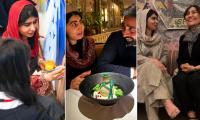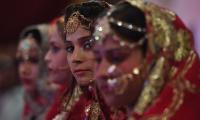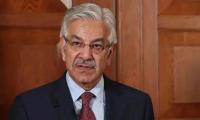Part of the Chinese Dream has been to eliminate poverty and build a moderately prosperous society ahead of the Chinese Communist Party (CPC)’s 100th birthday in 2021. The Chinese government has claimed that it has achieved the target ahead of schedule despite being challenged by the onslaught of the global pandemic COVID-19. Naysayers and critics in the Occident are nitpicking and deriding the claim while more impartial observers declare the achievement as the miracle of the century.
While it is possible for propaganda campaigners to put on a dog and pony show to impress visitors and prove a purported claim, one must find solace in the words of the sagacious Abraham Lincoln, who was an American statesman and lawyer, serving as the 16th President of the United States from 1861 until his assassination in 1865. Lincoln led his nation through the American Civil War, the country’s greatest moral, constitutional, and political crisis. He succeeded in preserving the Union, abolishing slavery, bolstering the federal government, and modernizing the US economy. Lincoln’s quote still rings true: “You can fool some of the people all of the time, and all of the people some of the time, but you cannot fool all of the people all of the time.”
This scribe has been visiting China regularly since 1974 and is an eyewitness to its progress, so it would not be out of place for me to examine the question as well as the modus operandi of the CPC to learn lessons from it if the veracity of the success claimed by the Chinese government is established. During my scores of tours all over China, even to the rural areas, I have found visible evidence of the gradual uplift of the once abject poverty. The meteoric economic rise of the eastern provinces had left a gap between them and the less opulent western region as well as between the rapidly growing urban community and the countryside. The disparity between the western and eastern regions has mostly been abridged through sharing of resources, the Belt and Road Initiative (BRI) added impetus to the process but the uplift of the rural community necessitated greater effort.
During my visit to numerous pastoral dwellings in 2010, I had noticed that the dilapidated abodes of farmers had been replaced by modest but concrete apartments and among other facilities, hi-speed internet and electricity was being provided free of cost. Xi Jinping expedited the process after taking up the mantle of Supreme Leader and devoted funds which were disbursed according to a concerted plan.
Western sources claim that Beijing poured almost $700 billion in loans and grants into poverty alleviation over the past five years — about 1 percent of each year’s economic output. That excludes large donations by state-owned enterprises like State Grid, a power transmission giant, which put $120 billion into rural electricity upgrades and assigned more than 7,000 employees to work on poverty alleviation projects.
If Chinese economy can sustain this kind of apportionment of funds and resources to achieve a noble task as poverty alleviation, who are we to grudge it. Reports indicate that the Chinese government offered free cattle and funds to farmers in remote mountain community, which have now multiplied, enabling the dwellers to lead a better life. Roads have been paved and lit with solar panels, subsidies granted to create jobs and build better housing while officials visit residents weekly to check on their progress.
The campaign took on new urgency in 2020 as the country bore the brunt of the coronavirus pandemic. Amidst adversity was opportunity. Facilities were established all over, including the rural region to manufacture medical supplies especially simpler items like face masks and body suits to avert the pandemic not only in China but the world over. Organizations that employed people who were existing below the poverty line, were provided subsidies as incentive while relatively lower income workers were given bonuses for their effort.
Resultantly, 700 million people have not just been lifted out of poverty, but to a standard of living where their offspring are admitted to institutions of higher learning and they themselves reside in decent living conditions, with civic amenities and a higher quality of life.
The World Bank Country Director for China, Martin Raiser, confirms that China’s eradication of absolute poverty in rural areas has been successful but he raises concern — whether it is sustainable or cost effective. He need not worry,
President Xi himself has acknowledged that further efforts were needed to share wealth more widely. He has also called for officials to make sure that newly created jobs and aid for the poor did not fade away in the coming years.
Some aspects still remain which include the availability of expensive but lifesaving drugs for the old and needy. Apprehension has been raised regarding corruption and people jumping the queue for receiving subsidies and funds from the poverty alleviation program. Hopefully, President Xi’s rigid ant-corruption regimen will ensure objectivity in meting out support.
The other challenge is for the Chinese government to provide incentives for its city-dwellers to move back to the countryside in a bid to revive fading rural towns and reduce the pressure from urban dwellings bursting at the seams. A balance has to be made in ecology keeping pollution in check and ensure an equitable distribution of scarce resources. China’s cities currently account for well over 90 percent of the nation’s Gross Domestic Product, moving jobs and consumers back to the countryside will achieve rich dividends.
Thus instead of finding faults with the Herculean effort that has achieved tremendous results in China, perhaps there is a need for learning lessons and emulating them, especially for developing nations like Pakistan facing acute economic challenges.







